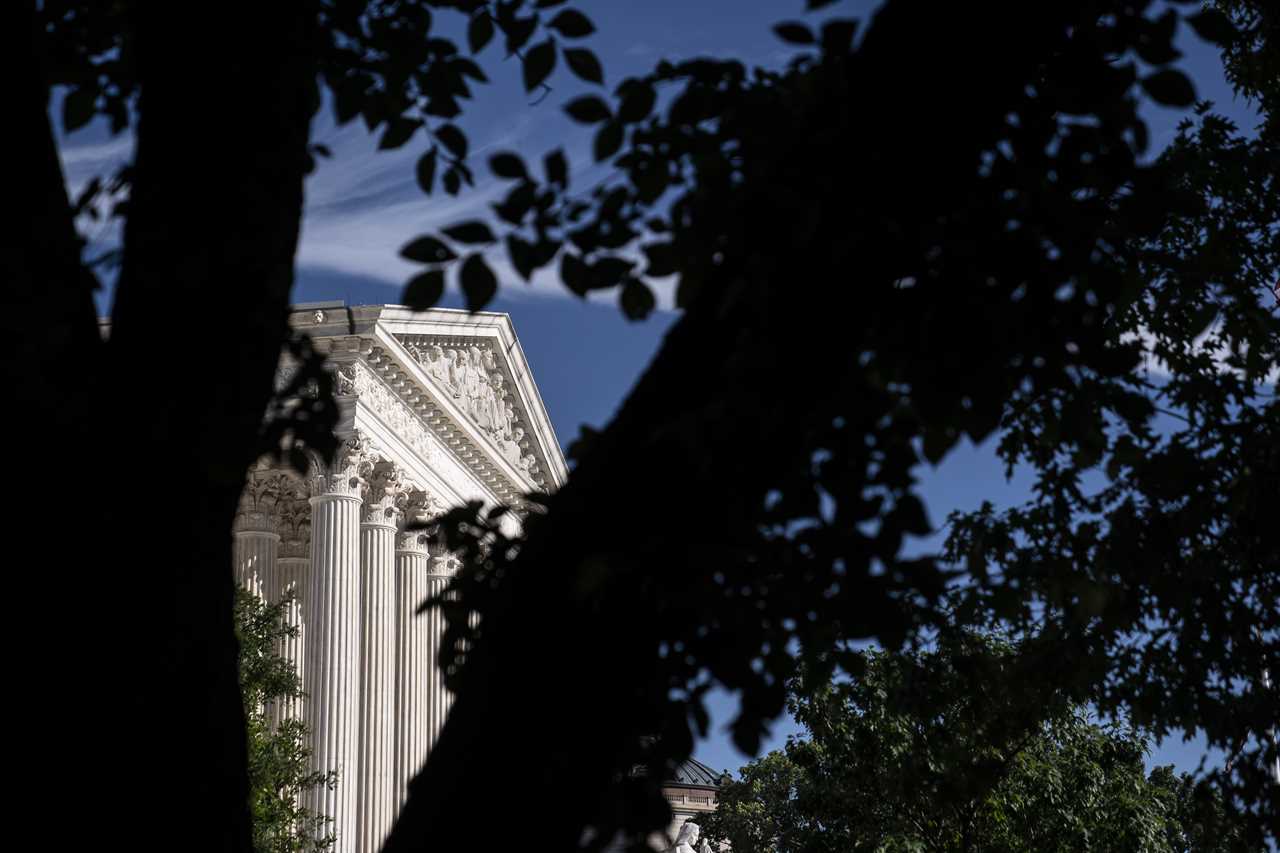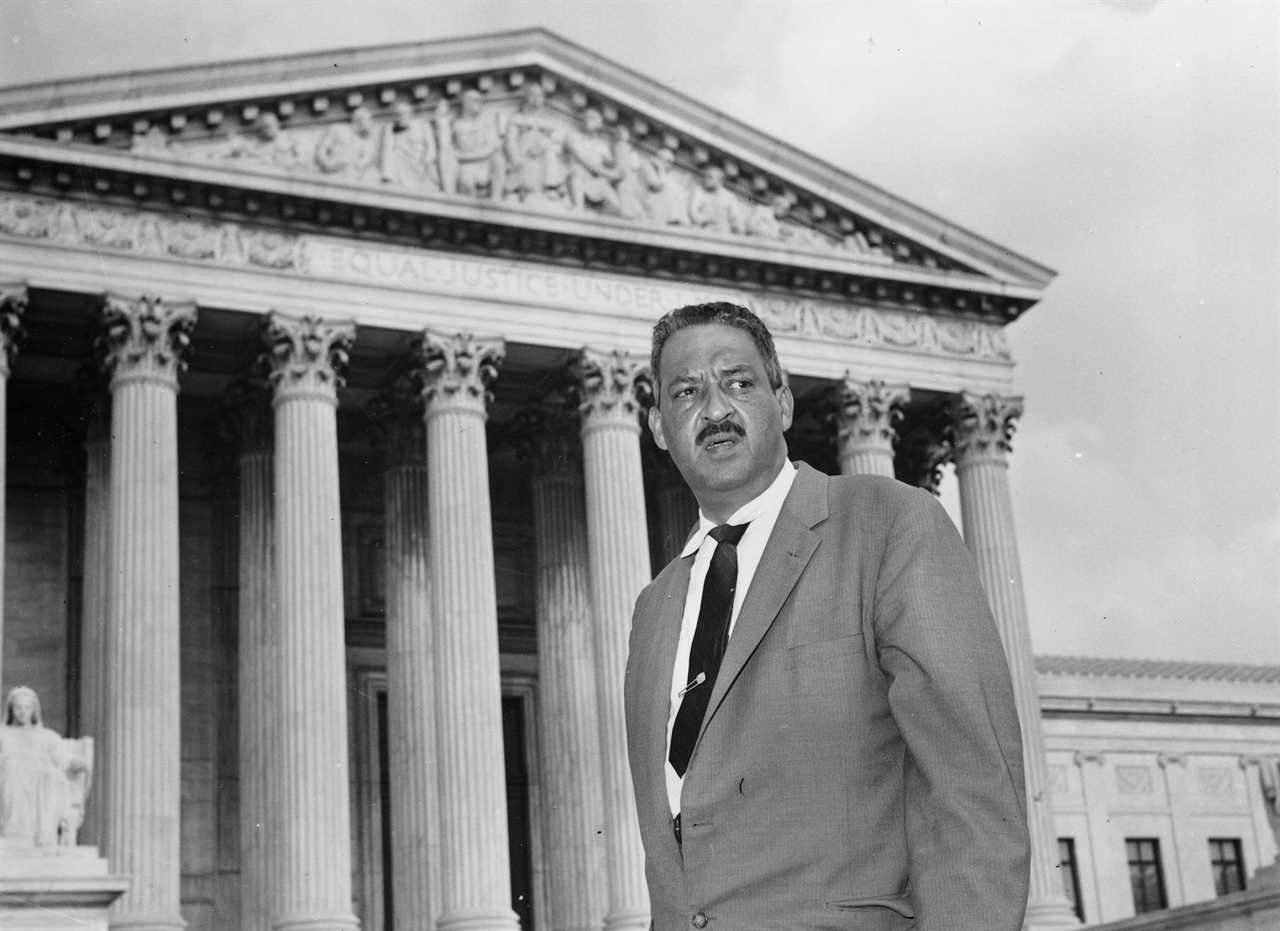
What happens when the Supreme Court gets it wrong?
Misguided court decisions have altered the path of the nation in sadly demonstrable ways. And the question arises again from the series of sharply divisive rulings by the current court.
The short answer is: Not much can be done. In the American system, an edict from the high court is almost uniquely without check or balance. When justices err, the people suffer the consequences.
The only corrective is the high court itself, as future generations reconsider once-settled doctrines. But problems often get worse before they get better, because Supreme Court errors are rarely one-offs. When a cabal of justices goes astray, they tend to keep on going. Mistake follows mistake, and the boundaries of American freedom get squeezed.
Mistakes are, of course, in the eyes of the beholder. The current court’s decision to overrule Roe v. Wade wasn’t unwelcome to the sizable minority who oppose abortion rights. In their eyes, the Roe precedent was the mistake. But a more rigorous assessment awaits. There have been many high-court rulings that, while comforting to supporters, look abominable, even unconscionable in the fullness of time — cases that few rational jurists, left or right, would ever try to defend.
Taken together, the judicial errors of the past paint a tragic, almost mournful, picture of the court’s role in American history. Eugenics. Forced sterilization. Racial segregation. Internment for citizens based on ancestry.

“In our governmental system, the Supreme Court, on constitutional questions, is infallible, though, as everyone knows, no one of its members comes within sight or sound of infallibility,” averred Justice David Brewer, who served from 1889 to 1910.
Brewer knew what he was talking about, because he sat with a group of justices who were far more conservative than the nation they served. Their decisions damaged American life for generations, denying the government the power to combat the economic excesses of the Gilded Age while giving the imprimatur of the highest law in the land to discrimination and segregation.
The occasion for Brewer’s remark was a dinner feting the 25th anniversary of the investiture of that court’s great dissenter, John Marshall Harlan. By today’s standards, it’s hard to classify Harlan as a liberal or conservative — he is, in fact, claimed by both sides — but he shared with today’s liberals a sense of foreboding about the court’s impact on the country. His refuge was his faith in the power of dissent. And dissent he did — with a roar that continues to be heard through the centuries.
But an examination of Harlan’s most significant cases provides almost a civics-class primer on the ways that judicial mistakes can linger and do great harm before finally being overcome. And it reveals that there is no single route to reconsideration.
The easiest path — but one less likely to provide optimism for abortion rights supporters — is simple persuasion. In 1895, the nation’s economy was being strangled by monopolistic trusts. Conservative justices were alarmed by the prospect of antitrust prosecutions under the newly approved Sherman Antitrust Act. When the Cleveland administration tried to break up the sugar trust — the lowest-hanging fruit in the orchard of trusts, controlling 98 percent of sugar manufacturing — the justices balked. A convoluted majority led by Chief Justice Melville Fuller insisted that control of manufacturing did not, in itself, indicate an intent to control prices.
Shockingly, Harlan was the only justice who saw the fallacy in this, rebutting, “Was it necessary that formal proof be made that the persons engaged in this combination admitted in words that they intended to restrain trade or commerce? Did anyone expect to find in the written agreements which resulted in the formation of this combination a distinct expression of purpose to restrain trade or commerce?”
This was no small matter: In industry after industry, manufacturers were banding together and cutting exclusive deals with railroad operators to drive out competitors and set wages and prices. The vast extent of the problem seemed to force some of the same justices to alter their thinking. Shifting political winds and relentless criticism of the court’s logic changed the tide. By 1905 — only 10 years later — the court had reopened the door to government actions to break up monopolies.
For supporters of Roe, however, a change of heart by existing justices seems patently unlikely. The close margin on abortion rights — 5-4, as opposed to the court’s 8-1 ruling in the sugar-trust case — may give the impression that the court doesn’t have so far to go to reach a different result. But unlike the nascent world of antitrust in the 1890s, the dug-in nature of the moral, political and legal issues surrounding abortion rights suggests no reconsideration is in the offing, barring a change in the court’s lineup.
Shielding trusts from legal action wasn’t the only way the Supreme Court extended the Gilded Age: It also blocked efforts to impose an income tax on the wealthy, leaving the government to fund itself through tariffs on basic goods. Once again, a group of judicial conservatives decided that the Rockefellers, Vanderbilts and others who held great fortunes were the victims of government overreach.
But unlike the Sherman Antitrust Act, the income tax was hardly a new idea. It had been utilized to fund the Civil War, so the court couldn’t escape the impression that it was making up new rules to protect the wealthy. After the justices split 4-4, the chief justice coaxed an ailing colleague back to Washington to cast the deciding vote. Except he didn’t: While the ill jurist supported the income tax, another justice shifted his position against it. The air of behind-the-scenes skullduggery was furthered when Chief Justice Fuller ordered an abrupt announcement of the decision before the opinions were written.
Harlan railed against this, scorching the majority for cravenly upending a long-settled precedent; he also argued that forcing the government to rely on tariffs would be disastrous in a global war, when trade would evaporate.
His warnings resonated with the public. But opponents of the income tax seized on the ruling to block any progressive taxation for nearly two decades. Finally, seeking to quiet demands for a new tax to test the court’s mettle, Senate leaders instead agreed to begin the arduous process of amending the Constitution. They doubted the requisite three-quarters of states would ratify an income-tax amendment. They were wrong. Three and a half years later, after Wyoming, Delaware and New Mexico approved the Sixteenth Amendment on the same day, the tax was back to stay.
It was, however, the last time that a deeply contentious political issue was resolved through the amendment process. Changing the Constitution remains a long, hard road, as those seeking direct election of the president can attest.
The greatest tragedy of the court during Harlan’s years was its fast retreat on the rights of African Americans, an injustice not only to millions of people but to the spirit and plain wording of the Constitution. The court struck down federal civil rights protections, refused to enforce voting rights and allowed states to ban interracial education. It also endorsed the idea that separating Blacks and whites was wholly consistent with the Constitution’s equal-protection clause, as long as the accommodations were roughly equal.
That case, the infamous Plessy v. Ferguson, occasioned Harlan’s famous declarations that the “Constitution is color-blind and neither knows nor tolerates classes among its citizens,” and that under the law, “the humblest is the peer of the powerful.”

Harlan’s dissent was immediately recognized by African Americans as a defining statement of purpose under the law, but drew little attention in the white world. A half-century later, though, it was adopted by Thurgood Marshall and other civil rights lawyers as a component of their legal case to overturn Plessy.
A new generation of justices recognized the tragic cost to Black people of racial separation. They also anticipated an inevitable backlash among white racists that would occur if the court were to demand desegregation. So they worked hard, over months and years, to project a unified front. When the court overruled Plessy in the 1954 case of Brown v. Board of Education, the vote was 9-0. It was an unambiguous message, a definitive statement.
Today’s supporters of the court’s decision to overrule Roe v. Wade invite comparisons with the saga of Plessy and Brown, as a way of showing that justices must follow their consciences over legal precedent. But the comparisons also reveal the vast distance in spirit between the Brown decision and that in Dobbs v. Jackson Women’s Health. While the Brown court recognized the potential disturbance to the county and spoke with one voice, the Dobbs majority couldn’t resist overturning abortion rights by a one-vote margin, all but challenging future justices to undo their work.
Flipping back and forth on a constitutional right based on a single change in court membership can’t help but undermine the force of the law and the court’s mystique. Thus, it might be predicted that Chief Justice John Roberts — whose concern for the court’s credibility led him to refrain from voting to overturn Roe — might now be reluctant to overturn Dobbs for the same reason. To prevail, abortion rights supporters would then need at least two changes in court membership plus the willingness of new justices to abandon any semblance of respect for precedent.
It’s a tall order, but one that may, in fact, represent the likeliest source of repeal. In Harlan’s era, the appeal to future generations was a cry for greater wisdom. Today, such appeals are more direct — to justices appointed with a different agenda.
----------------------------------------
By: Peter Canellos
Title: When the Supreme Court Makes a Mistake
Sourced From: www.politico.com/news/magazine/2022/06/29/undo-supreme-court-mistakes-00042970
Published Date: Wed, 29 Jun 2022 03:30:00 EST






